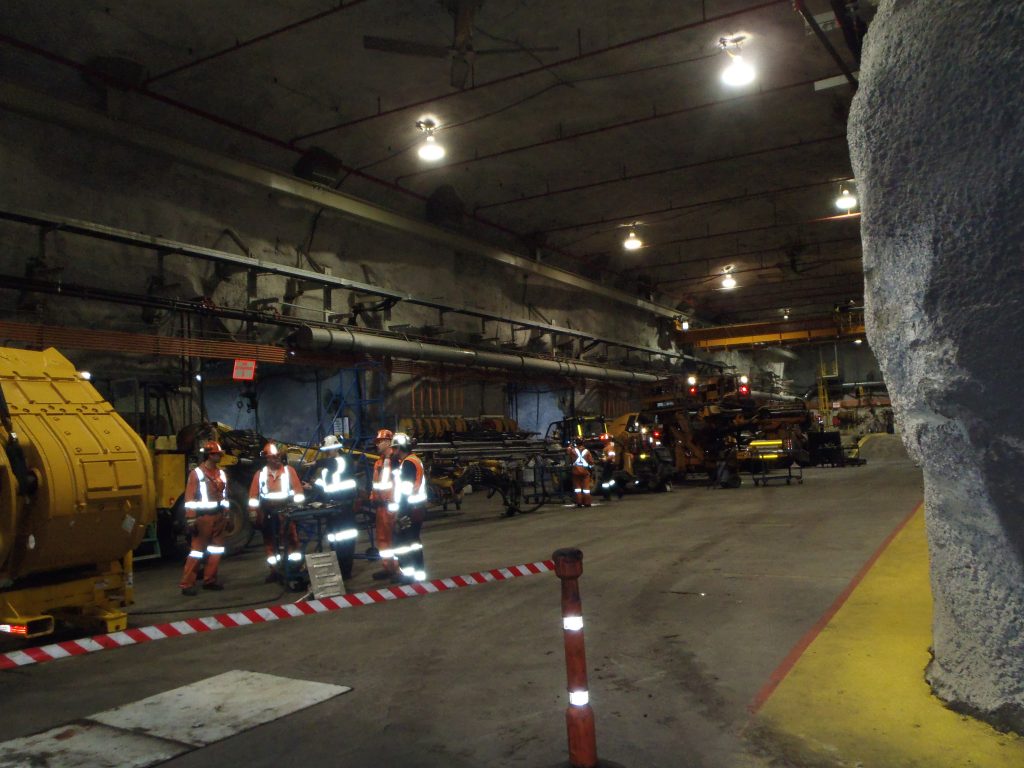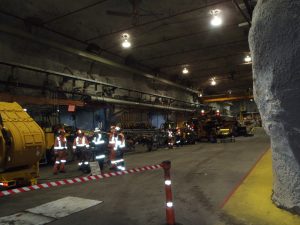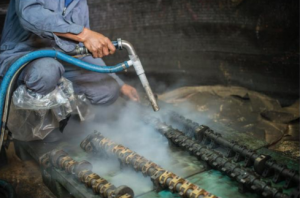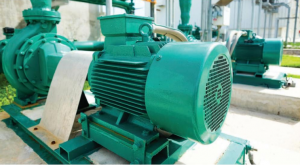
Master the basics of cleaning and degreasing
January 27, 2017 | By Jeff Smith
 OLYMPUS DIGITAL CAMERA
OLYMPUS DIGITAL CAMERA 
Contributor Jeff Smith explores mistakes and good practices for cleaning and degreasing equipment.
Throughout my career I often found that the lack of applied basic practices is often the root cause of many issues. Equipment cleaning and degreasing seems at first glance hardly worthy of consideration. Find the least senior worker and send him to clean. What could go wrong?
Let’s explore the common mistakes and good practices as well as how to leverage your cleaning program to optimize your asset inspections.
Fleet washing
Consider the mobile equipment world. In many organizations we simply have a scheduled PM program that requires a clean asset. The “new guy” dons the PPE and is told how to start the pressure washer, how not to grab the metal end of the wand when it’s hot (normally related to a story about his predecessor). The asset is parked in the wash bay and the following instructions are given: “Blow the big stuff off with the fire hose and then clean it with the power washer.”
Since the new guy is keen to progress with his new job, he quickly grabs the fire hose and starts blasting the still hot asset, admiring the force water pressure produces. He lets the unit have it.
Once everything is dripping he fires up the pressure washer, cranks on the soap and proceeds to spray every little item, including electrical panels, breathers and hydraulic cylinders. All greasy spots are thoroughly cleaned, blasting high pressure soapy water into every pin bore and seal he can find. What could go wrong?
Common mistakes for mobile equipment cleaning include:
* Flooding of electrical cabinets, water ingress in electrical connectors
* Spraying seals can result in ingress of material and soaps into wheel bearings, pins, engines, hydraulic systems, and air systems.
* Flooding or spraying vents can result in ingress to reservoirs, fuel tanks and gearboxes. Flooding or spraying air filter housings can result in wet filters that quickly clog in service.
* High pressures can damage some components.
* Inadequate cleaning can result in rock or debris jammed in cable or hose runs introducing wear points.
* Inadequate cleaning facilities often have improper collection of water and contaminates, resulting in ground pollution.
* Harsh or incompatible soaps and harsh solvents can result in seal swelling, hose degradation and plastic embrittlement.
It turns out there are a number of things that can be impacted by underestimating the criticality of the cleaning task. So what would be different in an organization that utilizes good practices? The “new guy” enters the wash bay having had adequate time to review the cleaning procedure with a qualified staff member. The qualified staff is with the new guy for his first wash to provide cognitive instruction and task certify the person to the asset type in question.
How would this wash differ from the previous one?
The initial steps would include bagging any ingress points, wrapping any key electrical connecting points and covering any water sensitive cabinets or zones. This would include a check list itemizing the controls needed to ensure all safeguards are addressed. The wet down of the asset would target zones impervious to flooding as noted in the washdown procedure. Implements would be in the optimal positions (box up, for example). The asset would have been given adequate time to cool to reduce thermal shock to materials. The wash procedure would be executed step by step without damaging the asset. The now qualified wash bay attendant would have a clear understanding of acceptable quality for a “clean” asset.
Good practices (best practices should be a moving target so I use “good practices”) for Mobile equipment washing:
* Have qualified personnel develop and optimize a detailed cleaning procedure.
* Ensure wash-bay personnel are trained and task qualified.
* Utilize visual aids (posters) to reinforce procedures.
* Utilize good cleanliness practices for the wash bay itself.
* Ensure cleaning equipment is in good order and functional.
* Identify moisture-sensitive zones and develop controls.
* Identify pressure sensitive zones and develop controls.
* Control potential ingress points (if you use desiccant breathers, bag them anyway as a cost-control measure).
* Ensure there is adequate time in the cleaning schedule for temperature reduction.
* Ensure trapped debris is removed (some things don’t just spray away).
* Hand wipe excess grease from pins and bushings, or if spray-cleaned ensure the grease system is cycled a sufficient number of times to purge contaminated grease.
* Ensure soap is rinsed from asset.
* Ensure the contaminated water is recovered; be environmentally conscientious.
 The utilization of good practices will ensure the wash itself does not damage the asset. Though this is a great start, the fact that the personnel washing the asset is required to look at virtually every point on the asset provides a great opportunity for inspection of the asset. In most cases all the wash bay attendant requires is a method of reporting his observations. If he sees a crack for example, you may require him to mark the spot and report it. In some organizations the wash inspection utilizes handheld computers to inspect, report and photograph the findings. This ensures the emergent findings will be incorporated into the PM work package or deferred until the next PM cycle.
The utilization of good practices will ensure the wash itself does not damage the asset. Though this is a great start, the fact that the personnel washing the asset is required to look at virtually every point on the asset provides a great opportunity for inspection of the asset. In most cases all the wash bay attendant requires is a method of reporting his observations. If he sees a crack for example, you may require him to mark the spot and report it. In some organizations the wash inspection utilizes handheld computers to inspect, report and photograph the findings. This ensures the emergent findings will be incorporated into the PM work package or deferred until the next PM cycle.
Some items wash bay attendants may observe:
* Missing/loose hose and piping retainers
* Warn, cut or abraded hoses
* Cracks and dents
* Loose and missing bolts
* Cuts or abnormal tire wear
* Leaks
Many of the types of issues observed in a wash bay, if addressed, will minimize the cascading damage and have the potential to impact the reliability of your organization.
Caring for components
While the mobile equipment washing covers basics for many assets, let’s consider more targeted equipment cleaning practices. In one industrial facility it was noted that water ingress in pump bearing elements was a substantial issue resulting in a large volume of work. This work included oil changes and dehydration system utilization. As this was a pulp mill the pumps were inside the building and the only source of water was the wash down.
So what are good practices for cleaning an industrial centrifugal pump? For this discussion let’s break the unit into its components: motor, coupling and pump.
 Motor
Motor
The life of an electric motor can be correlated to the amount of heat it is exposed to. Motors cannot shed heat if the cooling fins and air fan inlet are covered with dirt and debris, so they should be clean. There are some basic things that should be considered for external motor washing.
Is the motor in question immersible? Prior to blasting an electric motor with water it is imperative to know the unit is powered down, locked out and can be sprayed. Most industrial facilities use immersible motors; they are designed to run in dry environments that may be subject to flooding. Submersible motors are sealed and designed to run submerged. If the motor in question is neither immersible nor submersible, do not spray it with water.
How is the motor lubricated? It is a good practice to lubricate a motor post washing if it is a greased motor, and does not have sealed bearings. If the motor has oil lubricated bearings, the vent caps should be covered.
Is the junction box well sealed? Visually check that the junction box is well sealed and in place. This logic also applies to any electrical controls or components in the vicinity of the motor that may be subject to overspray.
If the motor is immersible it can be power washed. For most basic motors the cover over the cooling fan should be removed to ensure it is clean. Spraying through the cover may miss portions of the buildup resulting in an imbalance condition. If the motor is not immersible the motor should be hand cleaned or dry ice blasted.
As with any cleaning, motor cleaning provides an opportunity to inspect for base degradation, loose or missing shims and physical damage.
Coupling
There are multiple types of couplings that are used on motor pump combinations. In most cases they are covered with guards but there are some things to consider by the various coupling types.
Elastomeric: Will the cleaning solution utilized degrade the elastomeric material utilized in the coupling? With the wash water temperatures impact the material?
Grid or gear type: If washed, ensure that the coupling is re-greased; if this is not possible, use water-resistant grease.
Belt drive: If washed there is a high likelihood that the belts will slip on start-up inducing wear; try to ensure they are dry and free of any soap residue.
Chain drives: If the chain drive is washed it should be re-lubricated (if externally lubricated) or re-waxed.
Pump
For the purpose of this article let’s just consider a basic bearing element centrifugal pump. There are two areas of concern the breather and the shaft seal.
Breather: The breather (regardless if it is desiccant or not) should be covered to limit ingress. If the pump is subject to frequent washes, consider piping the breather to a remote location.
Shaft seal: In most sealing arrangements that flush with seal water the washing should have no impact; if it is a greased, packing regressing will be required. Considerations for washing complex sealing arrangements, such as nitrogen seals, should be discussed with your vendor.
Regardless of the asset type, a cleaning procedure should be developed and utilized. Your cleaning personnel should understand and apply all aspects of the procedure.
This article appears in the December 2016 issue of Machinery and Equipment MRO magazine.
Jeff Smith a reliability subject matter expert who has served as senior advisor for the Association for Maintenance Professionals (AMP) and served on the U.S. tag for ISO 55000. Reach him at jsmith@acuren.com.
